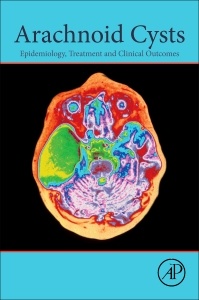Arachnoid Cysts Epidemiology, Biology, and Neuroimaging
Coordonnateur : Wester Knut

Intracranial arachnoid cysts are congenital malformations with a predilection for the middle cranial fossa and an estimated prevalence in the general population as high as 1.7%. The common assumption is that these cysts are incidental findings and the symptoms associated with them are not caused by the cyst and consequently, that surgical intervention will not benefit the patient. However, there is now a growing understanding reflected in the international literature among neurologists and neurosurgeons that arachnoid cysts do harm and that the patients? complaints can be relieved by surgical treatment.
Arachnoid Cysts: Epidemiology, Biology, and Neuroimaging gives a broad and updated presentation of the condition, including epidemiology, etiology, biology (including genetics and molecular biology), and neuroimaging of same. This book is written for researchers, residents, and clinical practitioners in clinical neuroscience, neurology, neurosurgery, neuroradiology, and pediatrics.
1. Historical perspective and controversial aspects.
Biological aspects 2. Arachnoid cysts - intracranial locations, gender, and sidedness 3. Molecular biology and genetics 4. Arachnoid cysts in glutaric aciduria type I (GA-I) 5. Ultrastructure of arachnoid cysts 6. Pathophysiology of intracranial arachnoid cysts: Hypoperfusion of adjacent cortex 7. Biochemistry – compostion of and possible mechanisms for production of arachnoid cyst fluid 8. The ‘Valve Mechanism’
Prevalence and natural history of arachnoid cysts 9. The prevalence of intracranial arachnoid cysts 10. Classification and location of arachnoid cysts 11. Growth and disappearance of arachnoid cysts 12. Arachnoid cysts and subdural and intracystic haematomas 13. Hydrocephalus associated with arachnoid cysts
Neuroimaging 14. Radiological work-up, CT, MRI 15. Arachnoid cyst. Prenatal detection, management and perinatal outcome 16. SPECT studies in patients with arachnoid cysts
researchers, clinical practitioners, and residents in clinical neuroscience, neurology, neurosurgery, and neuroradiology
- Gives a detailed account of all pathophysiological aspects of arachnoid cysts
- Covers epidemiology, etiology, biology, genetics and molecular biology and neuroimaging of arachnoid cysts
- Discusses present controversies in cyst management in a historical perspective
- Provides information of use to researchers, residents, and clinical practitioners in clinical neuroscience, neurology, neurosurgery, neuroradiology, and pediatrics
Date de parution : 12-2017
Ouvrage de 238 p.
15x22.8 cm
Thème d’Arachnoid Cysts :
Mots-clés :
Active transport; Angiogram; Aquaporin; Arachnoid cyst; Arachnoid cyst membrane; Arachnoid cysts; Biochemistry; Brain perfusion; Brain scintigraphy; CSDH; CSF shunting; CT; CT-cisternography; Cerebral SPECT; Cerebral perfusion; Cerebrospinal fluid; Cisternography; Classification; Controversies; Convexity; Copy number variation; Cystoperitoneal shunt; Cystoperitoneal shunting; Cysts of the subarachnoid space; DNA copy number variation; De novo; Development; Diagnosis; Diagnosis with isotopes; Differential diagnosis; Diffusion weighted MRI; Disappearance; Distribution; Electron microscopy; Epidemiology; Familial occurrence gene expression; Fenestration; Fetal MRI; Filling; Gender; Genetic; Glutaric aciduria type I; Glutaryl-CoA dehydrogenase; Growth; Hematoma; History; Hydrocephalus; Immunohistochemistry; Interhemispheric; Intracranial cysts; Intracystic; Location; MRI; Magnetic resonance (MR) imaging; Microarray; Middle fossa; Misconceptions; Morphology; NKCC1; Neuroendoscopy; Neuroimaging; Neurosurgery; Newborn screening; One-way valve; Osmotic pressure gradient; Outcome; Pathophysiology; Phase contrast MRI; Phase-contrast magnetic; Polymerase chain reaction; Positron emission tomography (PET); Posterior fossa; Predilection; Prenatal diagnosis; Preponderance; Prevalence; Regional cerebral blood flow; Resonance imaging; Retrocerebellar; Sidedness; Single photon emission computerized tomography (SPECT); Subdural; Subdural hemorrhage; Suprasellar; Sylvian; Symptoms; Temporal lobe agenesis syndrome; Twin; Ultrasound; Ventriculomegaly; Ventriculoperitoneal shunt; Ventriculoperitoneal shunts; Western blot; X-ray



